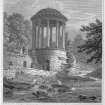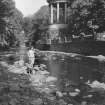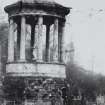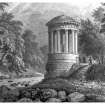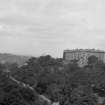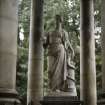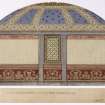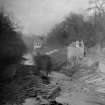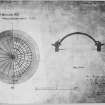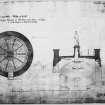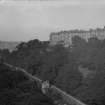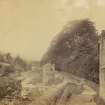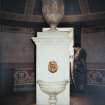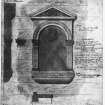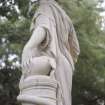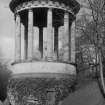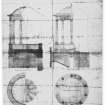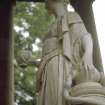Pricing Change
New pricing for orders of material from this site will come into place shortly. Charges for supply of digital images, digitisation on demand, prints and licensing will be altered.
Upcoming Maintenance
Please be advised that this website will undergo scheduled maintenance on the following dates:
Thursday, 9 January: 11:00 AM - 3:00 PM
Thursday, 23 January: 11:00 AM - 3:00 PM
Thursday, 30 January: 11:00 AM - 3:00 PM
During these times, some functionality such as image purchasing may be temporarily unavailable. We apologise for any inconvenience this may cause.
Edinburgh, Water Of Leith, St Bernard's Well
Well (18th Century)
Site Name Edinburgh, Water Of Leith, St Bernard's Well
Classification Well (18th Century)
Alternative Name(s) Dean Gardens; Mackenzie Place; St Bernard's Bridge
Canmore ID 52586
Site Number NT27SW 119
NGR NT 24451 74247
Datum OSGB36 - NGR
Permalink http://canmore.org.uk/site/52586
- Council Edinburgh, City Of
- Parish Edinburgh (Edinburgh, City Of)
- Former Region Lothian
- Former District City Of Edinburgh
- Former County Midlothian
NT27SW 119 24451 74247
NMRS REFERENCE
See Historical File (1.12)
Information from Hill's 'Historic Memorials of Stockbridge' (see Bibliography)
The founding of the first well:
'A mineral well has lately been discovered between the village and the Water of Leith and Stockbridge... To preserve the well from the injury of the weather, and prevent its being overflowed by the Water of Leith, on the banks of which it is situated, a stone covering is to be erected over it. The foundation-stone of this building was laid September 15th...by Alexander Drummond, brother of Provost Drummon... It is called St Bernard's Well.'
The Scots Magazine, September 1760
The founding of the present well:
'On the 1st of May, the foundation-stone of the mineral well of St Bernard's, in the vicinity of Edinburgh, was laid in the presence of several gentlemen of the neighbourhood. A plate of metal was sunk into the stone, with the following inscription:
Erected For the benefit of the public at the sole expense of Francis Garden, Esq. of Troop A.D.1789 Alexander Nasmith, Architect, John Wilson, Builder'
Appendix to the Scots Magazine (1789?)
Information from Miss Alison Kelly, 1983:
St. Bernard's Well - Coade Stone.
In 'Edinburgh, the Story of a City' by E F Catford, plate opposite page 153, is a drawing by Thomas H Shepherd of the first state of the well, with the figure (Hygeia by Mrs Coade) visible inside. Dated 1829.
Publication Account (1951)
194. St. Bernard's Well, Wellpath.
About 1760 a mineral spring, very similar in character to those at Harrogate, was discovered on the rocky right bank of the Water of Leith, and in September of that year it was roofed over. But the existing building dates only from 1790, when Lord Gardenstone, who had drunk the waters to advantage, commissioned the architect Alexander Naismith to design a suitable pump-room. This was formed as the base of a graceful 'temple', a rotunda in the Roman Doric style, covering a statue of Hygeia (Fig. 425 [SC 1116565]). The building was repaired in 1887 ,when the original statue, by this time disfigured, was replaced by another of the same subject.
RCAHMS 1951, visited c.1941
Project (1997)
The Public Monuments and Sculpture Association (http://www.pmsa.org.uk/) set up a National Recording Project in 1997 with the aim of making a survey of public monuments and sculpture in Britain ranging from medieval monuments to the most contemporary works. Information from the Edinburgh project was added to the RCAHMS database in October 2010 and again in 2012.
The PMSA (Public Monuments and Sculpture Association) Edinburgh Sculpture Project has been supported by Eastern Photocolour, Edinburgh College of Art, the Edinburgh World Heritage Trust, Historic Scotland, the Hope Scott Trust, The Old Edinburgh Club, the Pilgrim Trust, the RCAHMS, and the Scottish Archive Network.
Field Visit (29 September 2001)
Over-life sized statue of Hygeia facing east, standing within the Roman Doric columns of a round temple. She is elaborately dressed in a contrapposto pose with her right leg bent. Her drapery is folded across her hips and cascades over her left shoulder. Beneath a diadem, her hair is twisted back into an elaborate braid falling down behind her long neck. She looks slightly to her right, a cup held in her right hand, while her left hand holds an urn on its side on top of a short column. A snake coils around this column and drinks from the urn.
The temple, based on Tivoli, was designed in 1788 by Alexander Nasmyth for Law Lord Gardenstone in 1888, and built by John Wilson. A statue of Hygeia, cast by Coade in London, was created on 22 September 1791.
Over the years the temple fell into disrepair, but in 1887 The Builder reported that 'through the munificence of Mr William Nelson, publisher' it had been restored, and 'the domed chamber decorated in mosaic and ultramarine and gold.' A new statue of Hygeia was to be placed under the open canopy (1).
Design period : 1788-1791 / 1887
Information from Public Monuments and Sculpture Association (PMSA Work Ref : EDIN1486)































